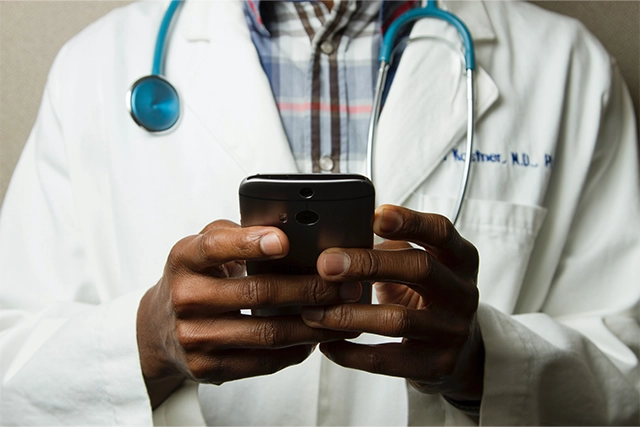Digital-first engagement models in life sciences: Don’t undervalue consent
Posted: October 2, 2023
The life sciences industry is undergoing a transformation like never before, thanks to the relentless advance of technology. Digital-first engagement models are taking center stage, revolutionizing the way life science organizations interact with patients and healthcare consumers, from virtual clinical trials to remote health monitoring.
These models offer the promise of more personalized, convenient, and efficient healthcare delivery. Yet, in the midst of this digital renaissance, one vital element must not be underestimated or overlooked: patient consent.
In this article, we’ll explore the importance of consent in digital-first engagement models in life sciences and why it’s a cornerstone of ethical and effective patient interactions.
But first, let’s look at the state of digital transformation right now and why it’s so important for advancing clinical development…
The digital-first transformation
Digital-first engagement models represent a paradigm shift in the life sciences industry. With advancements in telehealth, mobile apps, wearables, and other technologies, life science organizations can now reach patients where they are, in the comfort of their own homes.
The potential benefits are immense:
Patient-centric care: Digital-first models empower patients to take control of their health, offering convenience and personalized support.
Efficiency and cost savings: Remote monitoring and telemedicine can streamline healthcare delivery and reduce costs.
Data-driven insights: Collecting real-time data from patients provides valuable insights for research and treatment development.
Global reach: Digital engagement enables organizations to reach patients around the world, expanding clinical trial participation and market access.
Building trust in digital engagement
Consent is not a mere formality; it’s the foundation of trust in digital-first engagement models. When patients are confident that their data is handled transparently and securely, they’re more likely to engage actively, contribute to research, and seek the care they need.
Our latest research report found that 6 in 10 consumers have apprehensions about electronically sharing their health data due to privacy concerns
Here are some strategies for ensuring consent remains a focal point of your digital engagement:
Clear communication: Use plain, understandable language to explain the purpose of data collection and how it will be used.
User-friendly consent: Design consent forms that are easy to understand and navigate, particularly in digital formats.
Data security: Implement robust data security measures to protect patient information and assure patients of its confidentiality.
Feedback mechanisms: Create avenues for patients to provide feedback and raise concerns about data use.
Digital-first engagement models are ushering in a new era of patient care and medical research, but they must stand on the bedrock of consent. It’s not just a legal requirement; it’s a fundamental element of ethical and effective patient interactions. In the digital age, consent bridges the gap between innovation and trust, and it must not be undervalued.
As life science organizations continue to embrace digital-first strategies, they must do so with a deep commitment to patient privacy, autonomy, and consent. By doing so, they can shape a future of healthcare that truly places patients at the heart of their healthcare journey.
Download: A guide to centralized consent in clinical development
How to manage consent more effectively
Consent is not a new term in healthcare. However, effective consent management requires careful consideration and implementation of technology that’s capable of handling high-volume and complex data. Why?
Privacy protection: Engaging patients through digital means involves the collection of sensitive health data. Consent ensures patients are aware of how their data will be used and gives them the power to decide.
Ethical imperative: Obtaining consent is not just a legal requirement; it’s an ethical imperative. Respecting patient autonomy is at the heart of modern healthcare practices.
Legal compliance: Many countries and regions have stringent data privacy laws, such as GDPR in Europe. Non-compliance can result in hefty fines.
Enhanced communication: By communicating with patients on their terms, you’re building trust and increasing the chances of engagement.
You’ll likely already have a platform that collects consent. In fact, you might have more than one – which is part of the problem. Life science organizations collect vast quantities of consent data, often with complex sharing requirements. For a digital-first engagement model, it’s imperative that this consent is distributed downstream across all of the different systems used within clinical development.
A dedicated consent management platform, like Cassie, can act as the connecting link between all of your platforms and can enable interoperability.
Through hundreds of out-of-the-box integrations and custom APIs, Cassie will update all consent data in real-time, whether they’re offline-to-online updates or medical vs. commercial consent values.
You can utilize and share data with confidence, knowing your end user’s preferences are honored across your entire ecosystem.
Consent and the future of patient engagement
Digital-first engagement models in life sciences have the potential to revolutionize patient care and medical research.
However, to fully harness their potential, we must recognize the pivotal role of consent. It’s not just a legal requirement but a fundamental element of ethical and effective patient interactions.
Consent is not merely a checkbox on a form; it’s the cornerstone of trust in digital-first engagement. When patients feel their data is handled with respect and transparency, they are more likely to engage actively and contribute to research and treatment development.
As life science organizations continue to embrace digital-first strategies, they should do so with a deep commitment to patient privacy, autonomy, and consent. By doing so, we can shape a future of healthcare that truly puts the patient at the center of the journey.

Download our guide on centralizing consent in clinical development
Efficient communication is vital for life science businesses that are handling clinical development. Different factors can present challenges to these organizations, such as legacy systems and disparate tech stacks.
In this guide, we cover:
- The significance of effective communication in life sciences
- The role of centralized consent in building communication
- An overview of centralized consent
- Six steps for implementing centralized consent


